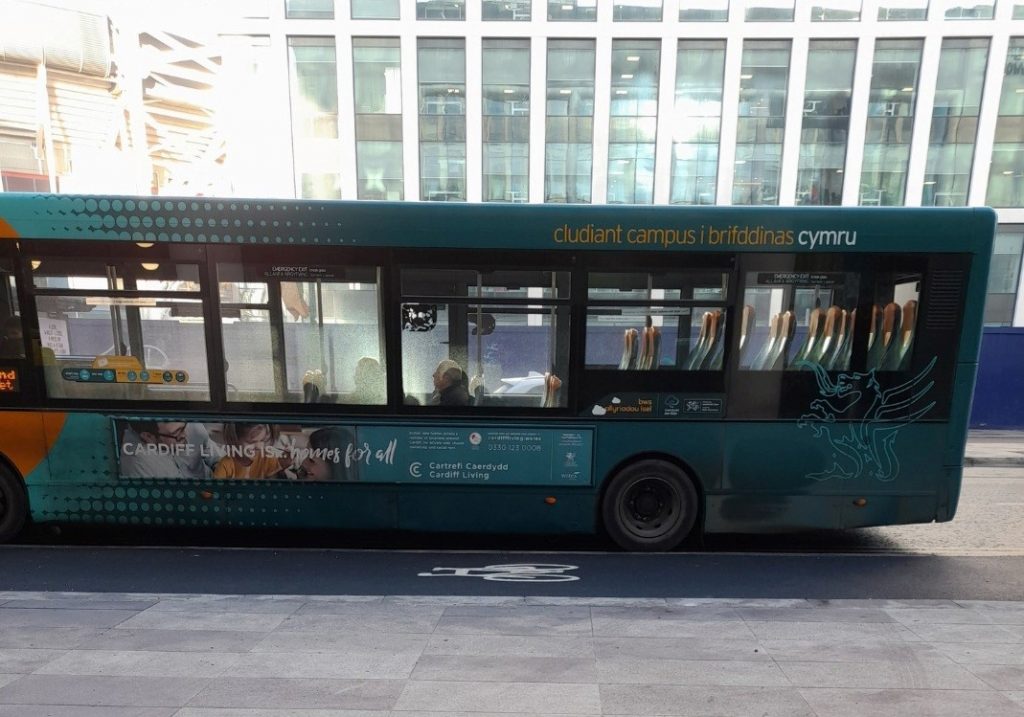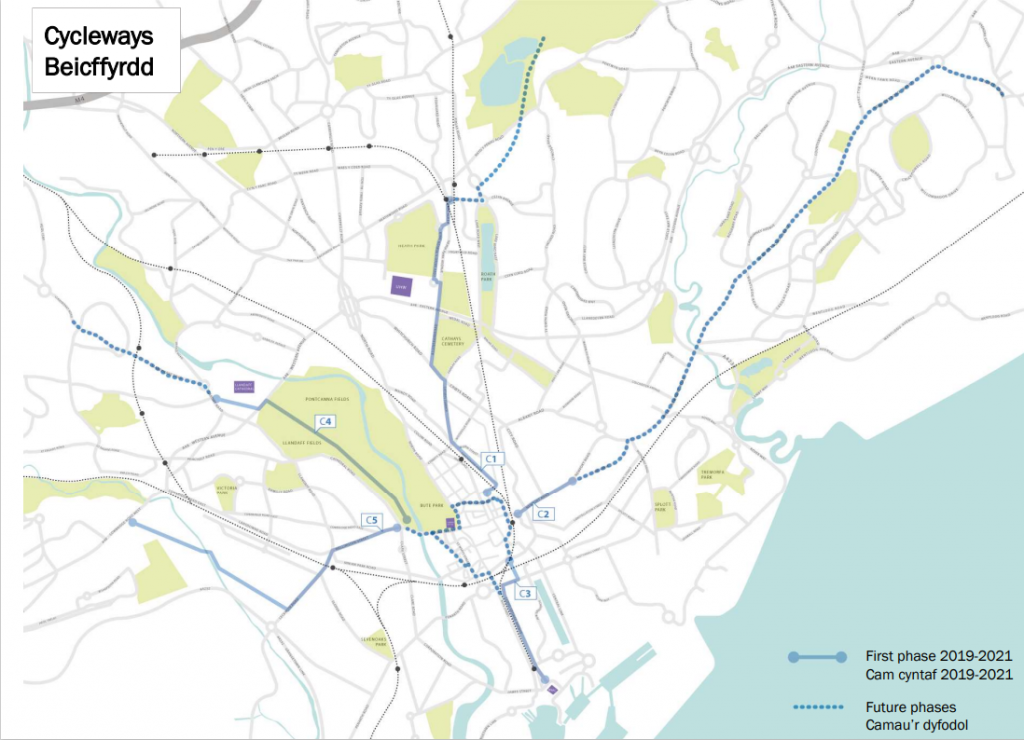Commuters are forced to dodge opening car doors, pedestrians, buses and debris in some areas
CYCLISTS from across Cardiff have raised safety concerns about the segregated lanes in the city.
Many cycle lanes are disconnected and intermittent and run alongside parked cars and bus stops, which creates an issue when car doors swing out into cyclists.
The lanes form part of the Integrated Network Map, launched by Cardiff Council in 2016 as part of its 15-year vision to improve cycling and walking routes across the city.
Nick Butcher from St Mellons contacted The Cardiffian to say he felt unsafe on the Newport Road cycle lane running through St Mellons.
“The cycle lanes through St Mellons aren’t really fit for purpose. They aren’t wide enough and some stop and start in dangerous places or are in the ‘door zones’ of parked cars,” said Mr Butcher.
He added that the cycle lane outside Sea View Store on Newport Road was particularly hazardous, as car parking spaces run alongside the lane and car doors frequently swing out into cyclists with little warning.
Mr Butcher has also witnessed parked cars lining the cycle lane opposite the Church Inn, also on Newport Road.
The Newport Road cycle lane is one of the main routes for active travel in the east of the city and is scheduled to become part of the planned cycle superhighway network.
Rodney Berman, councillor for Penylan, contacted Cardiff Council after he found a diversion sign left in the middle of a busy cycle lane leading from the Flourish down Bute Place in Cardiff Bay. Coun Berman was concerned that commuters cycling at speed would not see the obstruction until it was too late.

His concern, raised on January 24, 2023, was quickly addressed, but other residents have not been so successful.
“It took almost a week for the cycle lanes and pavements to be swept after I first reported debris on Newport Road,” said Mr Butcher who contacted the council on January 17, 2023.
“There is still some debris left, although it’s now possible to cycle in the lanes.”
For Cardiff University lecturer, Michelle Deininger, poorly considered cycle lanes have turned a morning commute into a “dance with death”, as cyclists rush past pedestrians who are getting off the bus.
“My bus now terminates *on* a cycle lane. Welcome to Cardiff! YAY” she tweeted.
The 95 bus has been pictured terminating outside the BBC offices on Wood Street, Central Square, leading passengers out on to an active cycle lane.

Other key roads that have raised concerns including Allensbank Road, which faces regular debris problems due to the amount of trees and Salisbury Road which includes a sharp blind bend.
Tudor Street cycle lane has also created complaints as the lane leads cyclists into oncoming cars from Fitzhamon Embankment and then comes to an abrupt end.
Despite safety concerns, many Cardiff residents have praised the introduction of cycle lanes which have contributed to the 17,000 tonnes of greenhouse gas emissions saved in Cardiff every year, according to Sustrans Cymru.
“I use the cycle lanes a lot and I think they’re generally a good idea,” said Ian Jeremiah who works at Cyclopaedia on Crwys Road.
“There are definitely some safety issues with them at the moment, but this is just the first iteration of cycle lanes and hopefully the council are willing to make some changes,” he added.

Cardiff Council has acknowledged that the cycling infrastructure around Cardiff is incomplete and has outlined its plan going forward for 2023/2024.
This includes:
- Finishing construction of Cycleway 1 link to University Hospital Wales in 2023.
- Progressing the detailed design for the first phase of Cycleway 2 – City Centre to Broadway in Splott via Boulevard De Nantes/North Road to Newport Road/Four Elms Road. This aims to start in early 2024.
- Working to implement the first phase of Roath Park Cycleway between Wellfield Road pop-up to Alder Road / Ninian Road junction.
- Investigating, designing and engaging with stakeholders in relation to the following strategic routes:

The Integrated Network Map outlines five routes connecting areas of Cardiff, to be completed by 2030 through a phased approach. This will meet the requirements of the Active Travel (Wales) Act 2013 to plan for the provision of routes and improvements for active travel.



